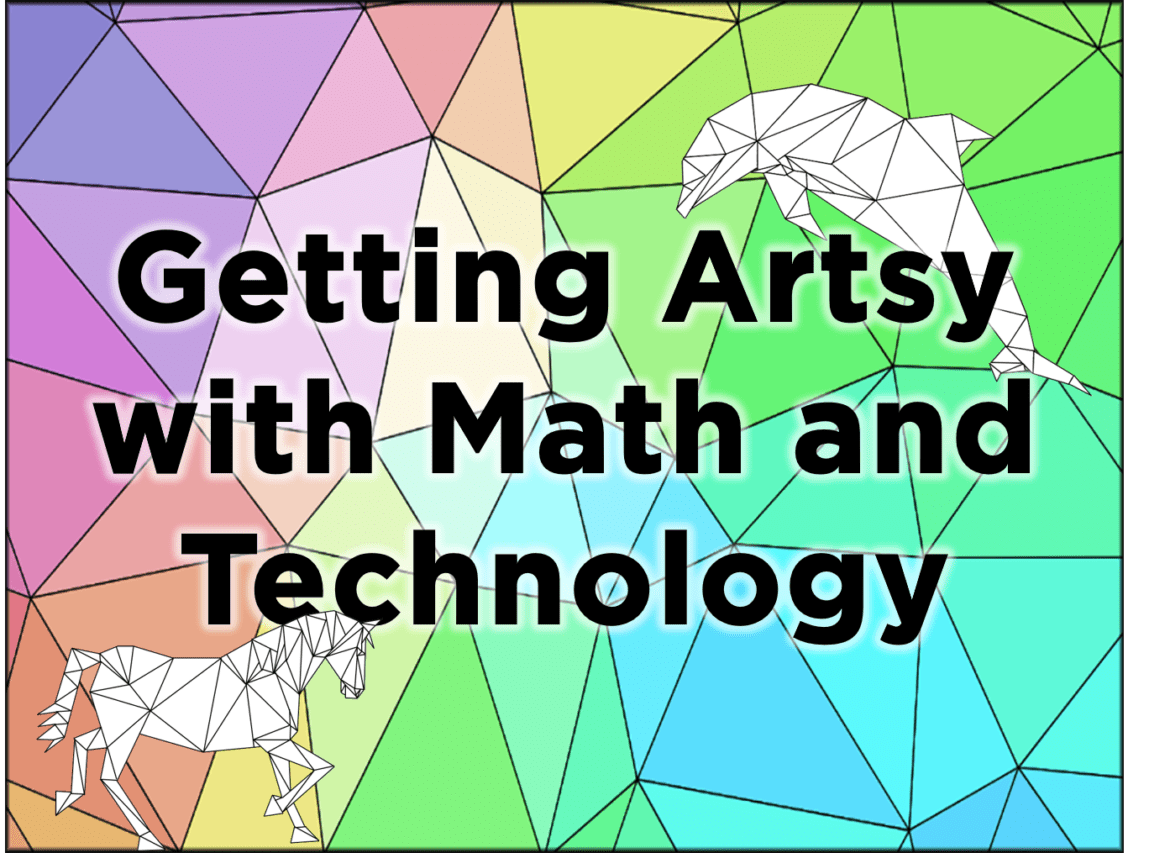With the promotion of STEAM (Science, Technology, Engineering, Art, and Math), a lot of folks are looking to see how they can add relevant art components. It’s easy to think of how art and science or art and engineering fit together. It may take a little more effort to realize how art can be combined with math. Once you start looking, though, you’ll be amazed at how integral math is within art. If you are just getting started, consider researching Fibonacci’s sequence or the Greek’s golden rectangle. In this post, we’ll take a look at using low poly generators as an artistic means for math.  Low poly has been around for decades in the computer industry. As early game designers needed a way to generate images (and later animation) that did not exceed the available memory, they found they could reduce the file size by reducing the amount of information contained in the picture itself. This was achieved by connecting a mesh of dots to form polygons that are filled with a single color. The most popular shape to use is a triangle. This method allowed designers to easily reduce an image to mathematical terms instead of every pixel having its own color. You may have noticed that even current gaming systems are making use of the retro look of low poly. News sites may apply a low poly filter when interviewing a witness that wants to remain anonymous so that their physical features are less likely to be identified.
Low poly has been around for decades in the computer industry. As early game designers needed a way to generate images (and later animation) that did not exceed the available memory, they found they could reduce the file size by reducing the amount of information contained in the picture itself. This was achieved by connecting a mesh of dots to form polygons that are filled with a single color. The most popular shape to use is a triangle. This method allowed designers to easily reduce an image to mathematical terms instead of every pixel having its own color. You may have noticed that even current gaming systems are making use of the retro look of low poly. News sites may apply a low poly filter when interviewing a witness that wants to remain anonymous so that their physical features are less likely to be identified.
Low Poly Generators
Low poly generators create create a mesh based on several factors, mainly how much variance do you want with the shape of the triangles (or other polygon shapes if you are not limited to just triangles) and how much variance you want with the size of the cells (triangles). A few will allow you to upload an image to use as a base, while others are strictly randomized and not based on a particular photo. A few terms to become aware of include the following:
- Cellsize – Sometimes referred to as elements, this is a polygonal shape created (either based on a particular part of the photo or generated by the developers code). In the samples below, only the cellsize has been changed.

- Variance – Sometimes referred to as randomness, this is how similar or different (in shape) each cell is to the other cells generated. If working with triangles, no variance will mean that they are all equilateral triangles. Increasing the variance will add some additional types of triangles (isosceles, right, etc.). The sample of the far left has no variance while the sample of the far right has the most variance.

- Depth – how much shading is added to an adjacent cell to give the illusion of depth…as if it was an origami project that has three-dimensional properties. In the samples below, the square on the far left has no depth. The depth is increased in each of the other three samples with the far right sample having the most depth applied.

The online tool LowPoly Generator is rather intuitive. It does not require an account to use, allows you to use your own image if you prefer, and gives you the capability to download your work without a watermark applied over it. For the samples below, a photo of a toucan was used. The photo on the left is the original photo. The middle photo is a low poly version with variance set to 0 (no variance in the shapes) and cellsize set to 0 (all cells are the same size). An increase in variance and cellsize has been applied to the photo on the right.

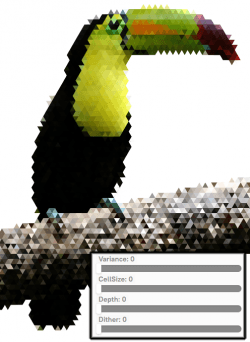
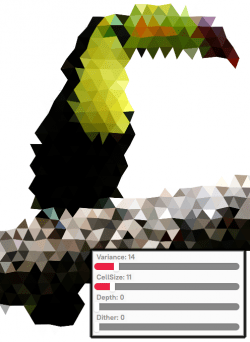
Triangulation Experiment requires you to use a photo. It has a feature to take a photo with the tool (but didn’t work with my laptop), so I used the Open Image button to load an image. You can also import your own photos with a simple drag/drop of the photo onto the tool’s canvas area. When done altering the image with the various tools, you can download the image as a png or svg file. You can also easily share your creation via a link or out to social media. 
HalftonePro Polygons allows you to choose what base cell shape you want to work with (triangles, right triangles, squares, or hexagons), though adding randomness (variance) to the image can distort the cells so they no longer resemble their original base. What I like most about this tool is that you can click on the color tab and choose for it to apply a stroke between cells. The downside of this tool is that it does require you to create an account if you want to upload your own photo; and, to save your work without a watermark, you will need to pay the $14.95 upgrade fee.
Trianglify.io is a simple low poly generator that only works with a selected color palette from their list or your own making; you are not able to import photos. Works well when you create your own color palette of just two colors.
Creating Your Own Low Poly Images
If you have a little more time, you can possibly use software you already have access to to create your low poly creations. You can find tutorials for such applications as Inkscape, Illustrator, and Photoshop. Using any of these tools allows you more freedom and creativity as well as control of your finished product. Even if you don’t have high-end illustration or paint applications, you can accomplish similar results using Google Drawings or Microsoft PowerPoint; after adding a photo to the layout, use the polyline tool to draw geometrical shapes over the object. Or, to be more creative, just create a low poly design with no background image as a guide!
Low Poly Art in Math
I really like the way that Halftone Pro will outline each shape. But without going pro, the watermark can be somewhat of a downer. If that doesn’t bother you, then consider using that tool. Or, if necessary, you can use a screen clipping tool to save your work as you incorporate low poly with math in the following ways.
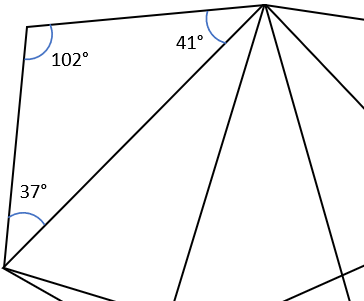 Identifying Angles – Because low poly can be made using only triangles, give students a page from the Low Poly Samples pdf file (link below) and have them identify whether each angle is a right, acute, or obtuse angle by writing r, a, or o in the angle respectively. For older students, have them use a protractor to identify the exact angle and have them write the measurement in each angle. Students can easily check their work by calculating the sum of the angles in the shape. The sum of the angles in a triangle will equal 180°, while the sum of the angles in a polygon with four or more sides is equal to 360°.
Identifying Angles – Because low poly can be made using only triangles, give students a page from the Low Poly Samples pdf file (link below) and have them identify whether each angle is a right, acute, or obtuse angle by writing r, a, or o in the angle respectively. For older students, have them use a protractor to identify the exact angle and have them write the measurement in each angle. Students can easily check their work by calculating the sum of the angles in the shape. The sum of the angles in a triangle will equal 180°, while the sum of the angles in a polygon with four or more sides is equal to 360°.
Identifying Types of Triangles – Given a low poly sheet made of all triangles, students identify each shape as equiangular, acute, right, obtuse, equilateral, isosceles, or scalene. If the page has triangles that go off the page, have students draw lines to create triangles using the edge of the page as one side. Have students assign a color to each of the answer options and color the shapes accordingly, which makes for quick self checking and grading.
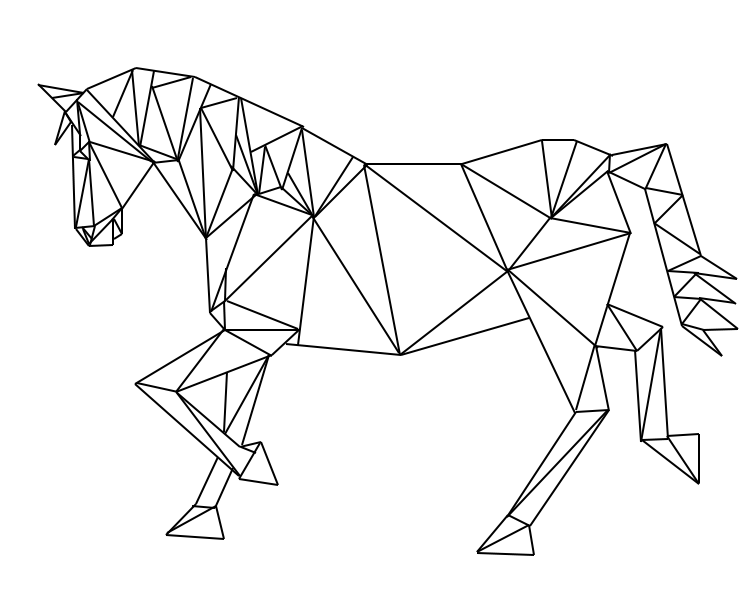 Low Poly Animals – Provide animal shapes for students to use as patterns. Laying a sheet of blank paper over the pattern, students trace the image using only straight lines and fill the image in with line segments to create triangles, squares, pentagons, etc. but no curved lines. The image to the right is my work using this method.
Low Poly Animals – Provide animal shapes for students to use as patterns. Laying a sheet of blank paper over the pattern, students trace the image using only straight lines and fill the image in with line segments to create triangles, squares, pentagons, etc. but no curved lines. The image to the right is my work using this method.
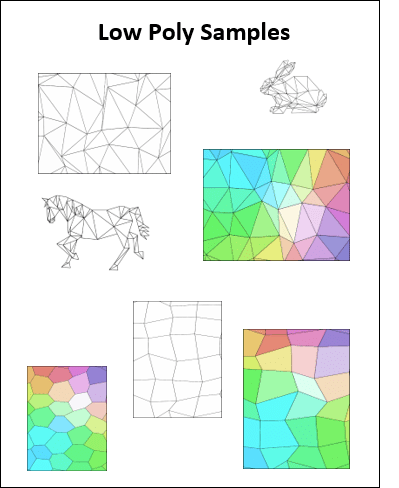 Download the Low Poly Samples document to get started. You’ll find pre-made samples in black and white, as well as several choices with color. There are several options in regards to cell size and variance. Some samples are made of triangles only, while others incorporate a variety of polygon shapes. The last few pages of the document include several low poly animal shapes.
Download the Low Poly Samples document to get started. You’ll find pre-made samples in black and white, as well as several choices with color. There are several options in regards to cell size and variance. Some samples are made of triangles only, while others incorporate a variety of polygon shapes. The last few pages of the document include several low poly animal shapes.
Taking It a Step Further
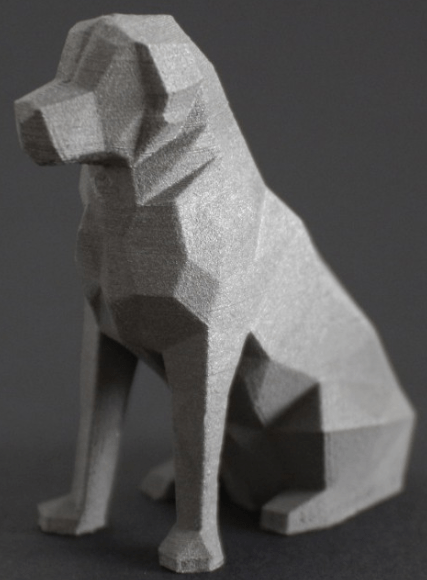 The sample ideas above will hopefully get you started in using low poly to connect art and math. Other skills to reinforce include perimeter and area. Take your learning further by transferring and extending your knowledge to 3D printing. Low poly shapes in 3D printing are those shapes that are more angular and not as refined. These shapes typically have smaller file sizes and can print faster. One may send a low poly stl file to be printed in order to check the printer’s calibration or to produce an initial prototype. Even if you don’t have a 3D printer, your students can still create in three dimensions using cardboard, paper, and tape.
The sample ideas above will hopefully get you started in using low poly to connect art and math. Other skills to reinforce include perimeter and area. Take your learning further by transferring and extending your knowledge to 3D printing. Low poly shapes in 3D printing are those shapes that are more angular and not as refined. These shapes typically have smaller file sizes and can print faster. One may send a low poly stl file to be printed in order to check the printer’s calibration or to produce an initial prototype. Even if you don’t have a 3D printer, your students can still create in three dimensions using cardboard, paper, and tape.
How will you use low poly shapes in math, art, and technology? Will you explore artists in the cubism era or angular art? Will you have your students expand the learning to begin creating low poly objects to demonstrate various formulas or concepts? Share with us in the comments. We’d love to see how you are getting artsy with math and technology.

